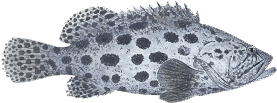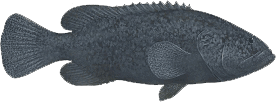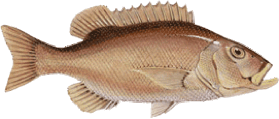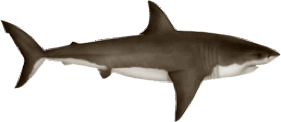ABW

Let's save our oceans!
Fishing Legislation
Helping maintaining our ocean environment is not our right, but our duty. We have the moral responsibility to fight for the conservation of every species on the planet. For a spear-fisherman this means helping fish sustainability through a selective, intelligent and rigorous catch. This is a sport, and it can’t become a commercial activity, otherwise it will loose the sense of what we do. We must give the example for generations to come, for others to look at this incredible sport and see the beauty, not the shame. In order to “keep on going”, we must respect the laws and above all, respect ourselves. Join us and sponsor an environmental sustainability. Don’t catch protected species!
Mozambican Protected Species
Helping maintaining our ocean environment is not our right, but our duty. We have the moral responsibility to fight for the conservation of every species on the planet. For a spear-fisherman this means helping fish sustainability through a selective, intelligent and rigorous catch. This is a sport, and it can’t become a commercial activity, otherwise it will loose the sense of what we do. We must give the example for generations to come, for others to look at this incredible sport and see the beauty, not the shame. In order to “keep on going”, we must respect the laws and above all, respect ourselves. Join us and sponsor an environmental sustainability. Don’t catch protected species!

Epinephelus Tukula
Short description
Common name: Potato Bass
Max length: 200 cm TL male/unsexed; max. published weight: 110.0 kg.
Dorsal spines (total): 11; Dorsal soft rays (total): 14 - 15; Anal spines: 3; Anal soft rays: 8. Interorbital space slightly convex; preopercle rounded or sub angular, the serrae slightly enlarged; upper edge of the operculum almost straight; nostrils sub equal; maxilla reaches to or past vertical at rear edge of eye. Overall color is pale brownish gray with several dark brown to black widely-spaced blotches; head with smaller dark brown spots and streaks (many radiating from the eye); dark spots on fins small distally. Large adults may be nearly black.
Biology
Mainly found in deep reef channels and seamouths, in current prone areas. Juveniles may be found in tide pools. Feeds on reef fishes, skates, crabs, and spiny lobsters. considered to be exceedingly territorial and very aggressive towards intruders. Vulnerable to spear fishers. Hand fed by divers in certain areas, but potentially dangerous to the inexperienced
Epinephelus Lanceolatus

Short description
Common name: Brindle Bass
Max length: 270 cm TL male/unsexed; common length: 190 cm TL male/unsexed; max. published weight: 400.0 kg.
Dorsal spines (total): 11; Dorsal soft rays(total): 14 - 16; Anal spines: 3; Anal soft rays: 8. Dorsal fin spines of large individuals increase in size from front to back. It is the largest of all coral reef dwelling bony fishes
Biology
The largest bony fish found in coral reefs. Common in shallow waters. Found in caves or wrecks; also in estuaries. Individuals more than a meter long have been caught from shore and in harbors. Juveniles secretive in reefs and rarely seen. Feed on spiny lobsters, fishes, including small sharks and batoids, and juvenile sea turtles and crustaceans. In South African estuaries, the main prey item is the mud crab, Scylla serrata. Unconfirmed reports of fatal attacks on humans. Nearly wiped out in heavily fished areas. Large individuals may be ciguatoxic.
Petrus Rupestris

Short description
Common name: Red Steenbras
Max length: 200 cm TL male/unsexed; common length: 100.0 cm TL male/unsexed; max. published weight: 80.0 kg.
Dorsal spines (total): 11; Dorsal soft rays (total): 10 - 11; Anal spines: 3; Anal soft rays: 8. Reddish, bronzy or golden-yellow in color; young with a blotch behind dorsal fin.
Biology
Found near rocky banks in coastal waters including estuaries. Adults solitary and territorial. Feeds on octopus, crabs and fish, especially Spondyliosoma. The flesh is highly esteemed, but the liver is poisonous due to high vitamin A content which causes hypervitaminosis. Popular angling fish. Largest of the porgies.
Polysteganus Undulosus

Short description
Common name: Seventy-four
Max length: 120 cm TL male/unsexed; common length: 80.0 cm TL male/unsexed; max. published weight: 16.0 kg.
Biology
Found over rocky reef and banks of deep waters. Carnivorous species which feeds mainly on fish and squid. An excellent food fish.
Polysteganus Undulosus

Short description
Common name: Great White Shark
Max length: 792 cm TL male/unsexed; 430 cm TL (female); common length: 600 cm TL male/unsexed; max. published weight: 3,400.0 kg; max. reported age: 36 years.
Dorsal spines (total): 0; Anal spines: 0. A huge, spindle-shaped shark with conspicuous black eyes, a blunt, conical snout and large, triangular, saw-edged teeth. First dorsal-fin origin usually over the pectoral-fin inner margins. Caudal fin crescentic. Lead-grey to brown or black above, lighter on sides, and abruptly white below. Black spot at rear pectoral fin base.
Biology
Primarily a coastal and offshore inhabitant of continental and insular shelves, but may also occur off oceanic islands far from land. Often close inshore to the surf line and even penetrates shallow bays. Pelagic, capable of migration across oceanic regions. Usually solitary or in pairs but can be found in feeding aggregations of 10 or more; does not form schools. Feeds on bony fishes, sharks, rays, seals, dolphins and porpoises, sea birds, carrion, squid, octopi and crabs and whales. Ovoviviparous, embryos feeding on yolk sac and other ova produced by the mother. Number of young born per litter, 7 to 14. Reported by some experts to attack humans which they mistake for their normal prey. Most attacks occur in estuaries. Caught by big-game anglers and line boats for its jaws. Reported to cause poisoning. Flesh is utilized fresh, dried-salted, and smoked for human consumption, the skin for leather, liver for oil, carcass for fishmeal, fins for shark-fin soup, and teeth and jaws for decorations . Possibly to 8 m in length, considered the world's largest predator with a broad prey spectrum. The record of 10.98 m is incorrect. Sometimes considered the most dangerous shark in the world.